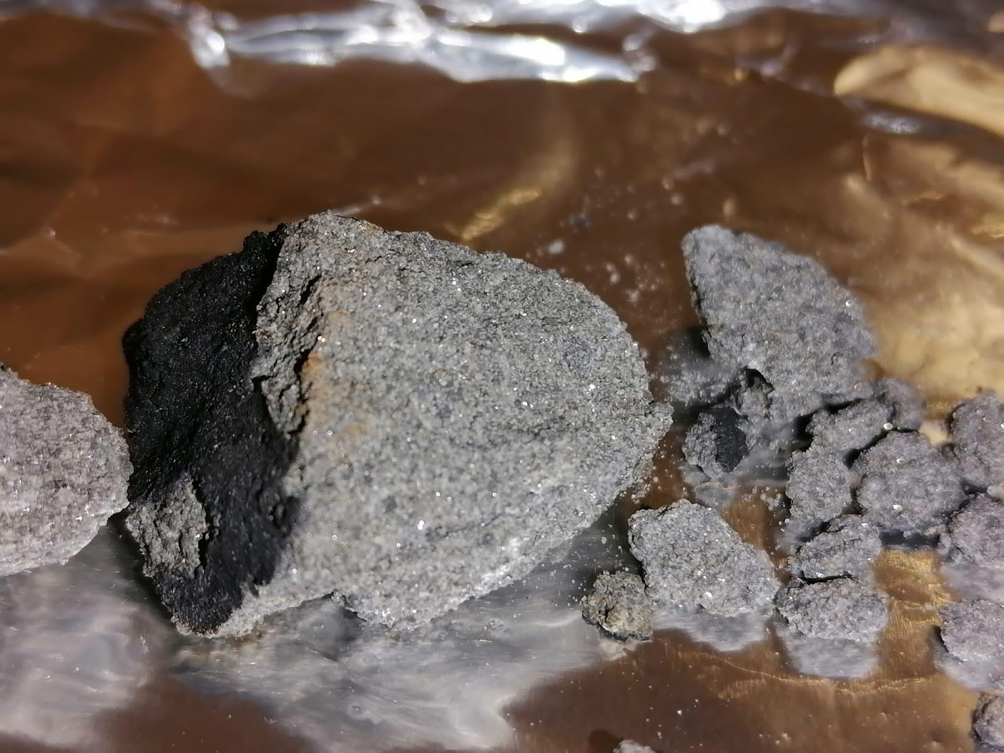by Daniele Gardiol
And then there were two. After the recovery of the Cavezzo meteorite, in early January 2020 , the calculations by experts of the Prisma network have obtained another success. This time a region north of Matera, in southern Italy, was indicated as the possible impact area of the Valentine’s Day meteorite.
It all started at about 19h local time on the evening of February 14: a bright bolide was seen by many observers, crossing the sky above the regions of Puglia and Basilicata, coming from the north-east. News media and the local population were immediately alerted and on the same day, brothers Gianfranco and Pino Losignore noticed some unusual debris on the balcony of their parents’ home, just north of Matera. Also, their elderly parents had heard a strong bang the previous evening, just outside their home.
At this time, about 12 sizeable fragments and several tens of smaller fragments have been recovered, for a total mass of at least 70 grammes. According to Prisma’s calculations, the meteorite fell vertically to the ground with a velocity of about 300 km/h: hard enough to chip a tile on the balcony which surrounds the home, and a solar panel on the roof. The fragments were collected by Dr. Carmelo Falco, a member of the Project Office of the Prisma network and INAF associate, who had immediately reached the area to coordinate the search.
Spurred by this discovery, the hunt will now continue with renewed enthusiasm, to search for other fragments that could have possibly survived passage through the atmosphere. Meanwhile, the collected material will soon be analyzed in detail to determine its chemical composition, mineralogy and petrographic characteristics, useful to classify the newly discovered meteorite.
Meteorites, in fact, have survived the 4.5 billion years since the formation of the solar system almost without changing: finding one so soon after its fall, as in Matera, is a precious discovery for scientists who are trying to determine how the planets, including our Earth, were formed. The second recovery of “fresh” meteorites in just a few years is a spectacular endorsement of Prisma’s success in recuperating such important material for science.
For more information on the PRISMA network see the website or contact Daniele Gardiol (daniele.gardiol at inaf.it , cell. 349 197 7591)
See also:
- Prisma network: Press release – Valentines day meteorite found
- Media Inaf news: Recuperata la meteorite di San Valentino (in italian)

